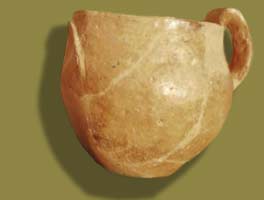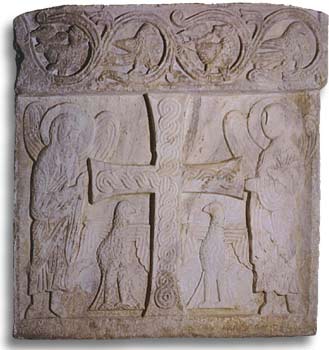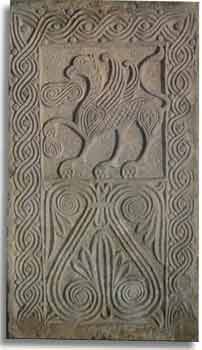|
Archaeological
collection of Museum in Herceg-Novi
Prehistory
 |
|
The
Bronze Age goblet with ornament from the cave Vranjaj
(reconstructed by S. Topic)
|
Dwelling
traces of the first human communities were discovered in the cave
Vranjaj, under the peak Radostak in hinterland of Herceg-Novi. They
date from the Neolithic period (5000- 4000 BC). Populating became more
intensive in Eneolith (2000 - 1700 BC) and also during Bronze Age.
The Bronze Age goblet with ornament from the cave Vranjaj. During the Bronze and Iron Age, burring under tumuluses
was intensive - Glogovik, Vranjaj, and Djevojacke Grede
The classical period
The antique and
Submarine Archeology section: Amphoreas and ship cargo fragments
from all Mediterranean countries during the domination of the old
Greece, Rome and Byzantine are exhibited. There are also ship cargo
exhibitions from the systematic submarine archeological excavation
of the emerged ship near the cape Kabala.
Early
medieval age
 |
|
Parapet
- plate from the church of the St. Toma church- Kuti 11th
century
|
The
beginning of the Christianity is presented by discoveries founded
on the locality Malo Rose, from 6th to 10th century. Stone decorative
plastics from 9th to 11th century and altar stone partition - parapet
plate from the church of the St. Toma in the village of Kuti and the church
in the village of Suscepan.
 |
|
Church
of st. Stefan, village of Suscepan
|
CONTACT:
Zavicajni muzej Herceg- Novi
Ulica Mirka Komnenovica 9
85340 Herceg-Novi
Serbia and Montenegro
E-mail:
muzej@cg.yu
Telephone: +381 88 / 322 485
www.rastko.rs/rastko-bo/muzej/
|

